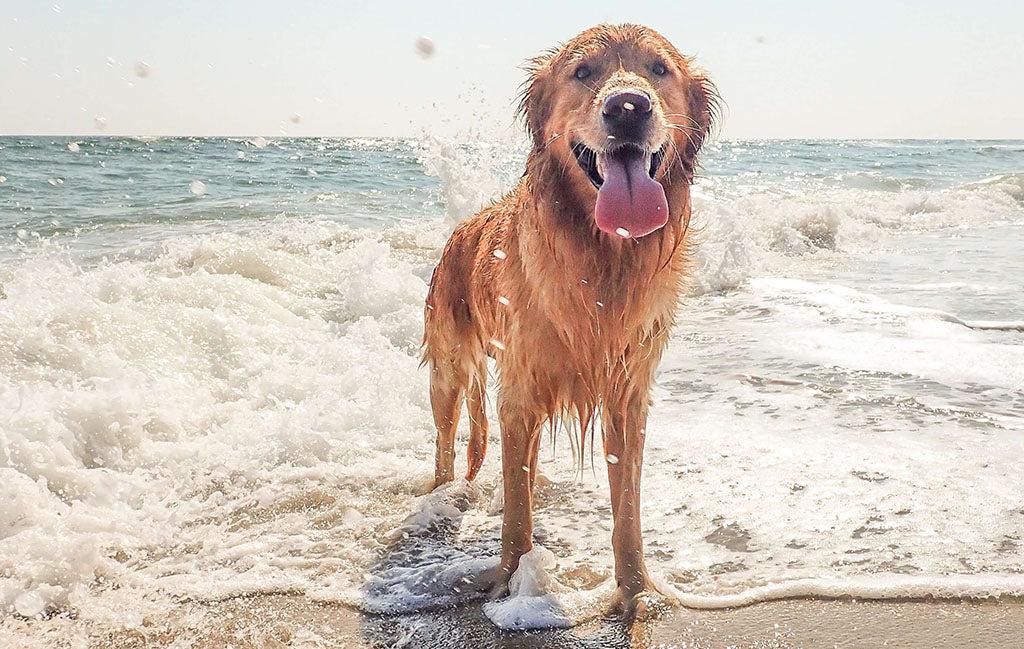In this article, we’ll walk you through everything you need to know about Chihuahua ears—from why they’re unique to how to clean them safely at home.
- Home/
- Dog/
- Health & Wellness/
- Chihuahua Ears: How to Clean & Care for Them
Chihuahua Ears: How to Clean & Care for Them

Key facts:
- Chihuahua ears are prone to buildup of wax and dirt—regular cleaning supports ear hygiene.
- Use a gentle, dog-safe ear cleaning solution and avoid harsh chemicals.
- Inspect ears weekly for signs of discomfort or excess debris.
- Positive reinforcement helps make ear cleaning a stress-free experience.
- Always consult a veterinarian if you notice unusual symptoms.
With their oversized ears and big personalities, Chihuahuas are one of the most recognizable dog breeds in the world. But those adorable, expressive ears do more than just add to their charm—they also need regular care to stay clean, healthy, and comfortable.
Whether your Chihuahua has upright ears (a common trait) or softer, floppier ones, learning how to care for them properly is a vital part of their grooming routine.
Why Chihuahua Ears Need Special Attention
Chihuahua ears come in two varieties: erect (which stand tall and alert) and drop ears (which hang slightly to the side). Both types are sensitive, and due to their small size and exposed shape, they can easily collect dust, dirt, wax, and even debris from outdoor play.
This makes regular ear cleaning an important part of dog ear care, especially for breeds like Chihuahuas that are prone to buildup in their ear canals.
How Often Should You Clean Chihuahua Ears?
The frequency of ear cleaning can vary depending on your pup’s lifestyle. If your Chihuahua spends a lot of time outdoors, rolls around in the grass, or has naturally waxy ears, you might need to clean them weekly.
Dogs prone to seasonal allergies or ear infections may need their ears cleaned regularly as part of their treatment plan. For others, once every two to three weeks may be sufficient.

If you notice the following signs it could indicate more than just dirty ears, but that your pup has an ear infection. See your vet for appropriate treatment.
Dr. Liza Cahn
- Excessive head shaking
- Scratching at the ears
- A strong or unusual odor
- Visible wax, debris, or discharge
- Redness or swelling around the ear canal
- Pain when ears are touched
Always consult your veterinarian if you notice persistent discomfort or irritation. Regular grooming supports healthy ears but should never replace professional care when needed.
What You’ll Need: Chihuahua Ear Cleaning Supplies
Before you begin, gather a few essentials:
- A good quality ear cleaning solution for dogs
- Cotton pads or gauze (avoid cotton swabs or Q-tips—they can push debris deeper)
- A towel
- Treats for positive reinforcement
Never use hydrogen peroxide, alcohol, or vinegar, as these can be too harsh for your Chihuahua’s delicate skin.
Step-by-Step: How to Clean Chihuahua Ears
Cleaning your Chihuahua’s ears at home is simple with the right technique. Here’s a step-by-step guide:
1. Choose a Calm Environment
Pick a quiet time when your pup is relaxed. Gently hold your Chihuahua on your lap or have them sit on a non-slip surface.
2. Inspect the Ears
Look for any visible dirt, redness, or excessive wax. If you notice anything unusual—such as swelling or a strong odor—it’s best to consult your vet before proceeding.
3. Apply the Ear Cleaner
Hold the ear flap upright and gently squeeze the ear-cleaning solution into the ear canal to fill it. Avoid letting the tip of the bottle touch the ear to maintain hygiene.
4. Massage the Base of the Ear
Gently massage the base of the ear for 20–30 seconds. When done properly, this should result in a squishy sound. This helps the solution break up wax and loosen debris inside the ear canal.
5. Let Your Pup Shake It Out
Your Chihuahua may naturally shake their head—this is a good thing! It helps bring loosened wax and dirt to the surface.
6. Wipe the Outer Ear
Use a clean cotton pad or soft gauze to gently wipe the outer part of the ear and remove visible debris. Avoid digging deep or inserting anything into the ear canal.
7. Offer a Reward
Don’t forget to give your pup a treat and some praise! Positive reinforcement makes future cleanings easier.


Grooming Tips to Keep Chihuahua Ears Healthy
In addition to regular cleaning, here are a few tips to help maintain your dog’s ear health:
Check Weekly
Even if you don’t clean the ears every week, make it a habit to check them for wax buildup, moisture, or dirt.
Keep Ears Dry
After baths or swimming, gently dry your Chihuahua’s ears or use a cleansing solution with drying agent. Moisture left in the ear canal can create an environment that may encourage unwanted buildup and yeast or bacterial growth.
Trim Surrounding Hair
If your Chihuahua has long hair near their ears, consider trimming it to help prevent debris from collecting around the canal.
Use the Right Products
Always opt for gentle, vet-recommended ear-cleaning solutions for dogs. Never use products meant for humans.
When to See the Vet
While regular cleaning can help support your Chihuahua’s ear health, it’s important to recognize when professional care is needed. Contact your veterinarian if you notice:
- Persistent scratching or head shaking
- Discharge from the ears
- Foul odor
- Redness or swelling
- Signs of discomfort during cleaning
These symptoms may suggest an issue that requires medical attention. Early intervention can help avoid complications and keep your pup feeling their best.
How Vets Diagnose and Treat Ear Infections
Otitis externa (infection of the external ear canal) is very common in dogs and is caused by an overgrowth of yeast or bacteria. To diagnose this condition, your vet will begin by getting a thorough medical history and performing a nose-to-tail physical exam. This will include looking into the ears with an otoscope to evaluate the ear canal and eardrum. They will then collect a swab from the ears to examine under the microscope.
This test, known as an ear cytology, will allow your vet to determine the type of organism causing the infection and help them pick the most effective treatment. In severe or recurrent cases, your vet may also discuss other testing, such as a culture and sensitivity, bloodwork, or imaging, to try to identify an underlying cause.
Ear infections are typically treated with topical products applied directly into the ear canal, such as medicated cleansers and ear drops. These products contain various ingredients, such as antibiotics, antifungals, and anti-inflammatories, and usually need to be administered once or twice a day for 10-14 days.
Alternatively, your vet may apply a long-lasting treatment in the vet clinic. In severe cases, medications may need to be given by mouth as well. Ear infections are often related to an underlying cause, such as allergies or hypothyroidism, so if the infection does not resolve or continues to recur, further veterinary care may be needed.
How to Care for Chihuahua Ears Final Thoughts
Chihuahua ears may be small, but taking care of them can make a big difference in your dog’s overall well-being. By incorporating ear checks and gentle cleaning into your grooming routine, you’ll help promote comfort and hygiene—while also strengthening the bond between you and your furry companion.
Remember, when in doubt, always consult your veterinarian. With a little care and attention, those iconic Chihuahua ears will stay clean, healthy, and perky for years to come.
 B
B




